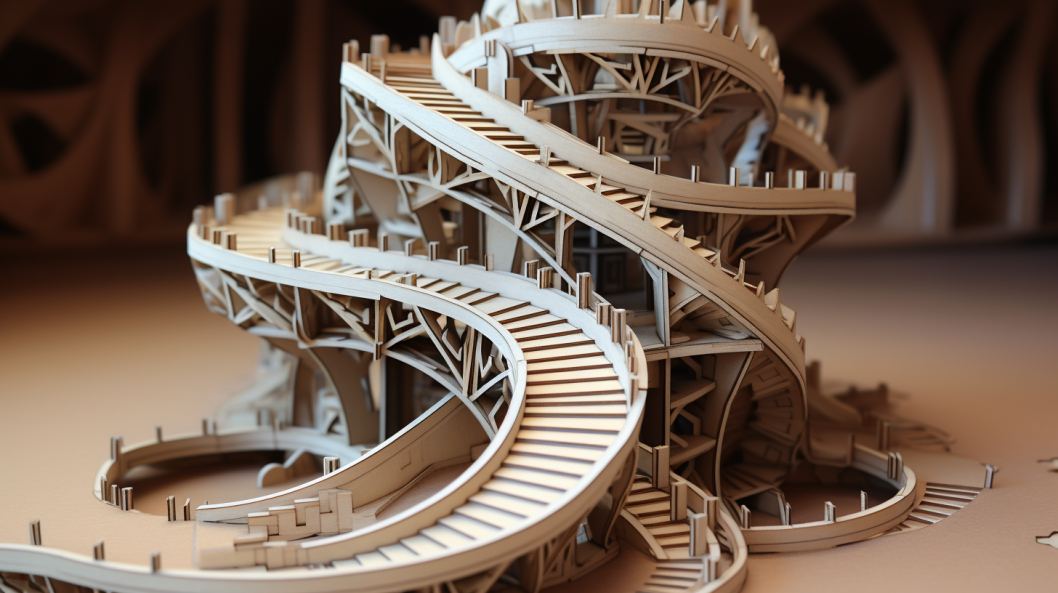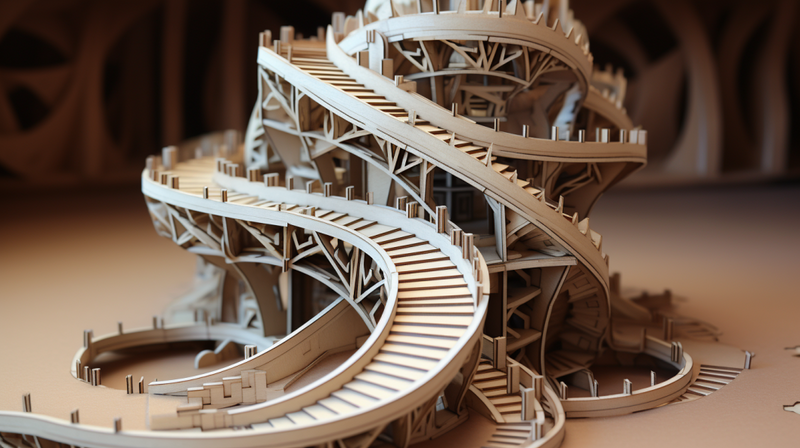When perusing through the fascinating world of paper folding, one might discover the intricate, mathematical universe hidden within the delicate folds and mesmerizing designs of origamic architecture. This art form is not simply a playful interaction with paper but rather a discipline where mathematics, aesthetics, and physical space converge. In the art of origamic architecture, intricate paper models rise from a single, folded sheet, revealing the hidden geometry and artistry that underpin both natural and man-made worlds.
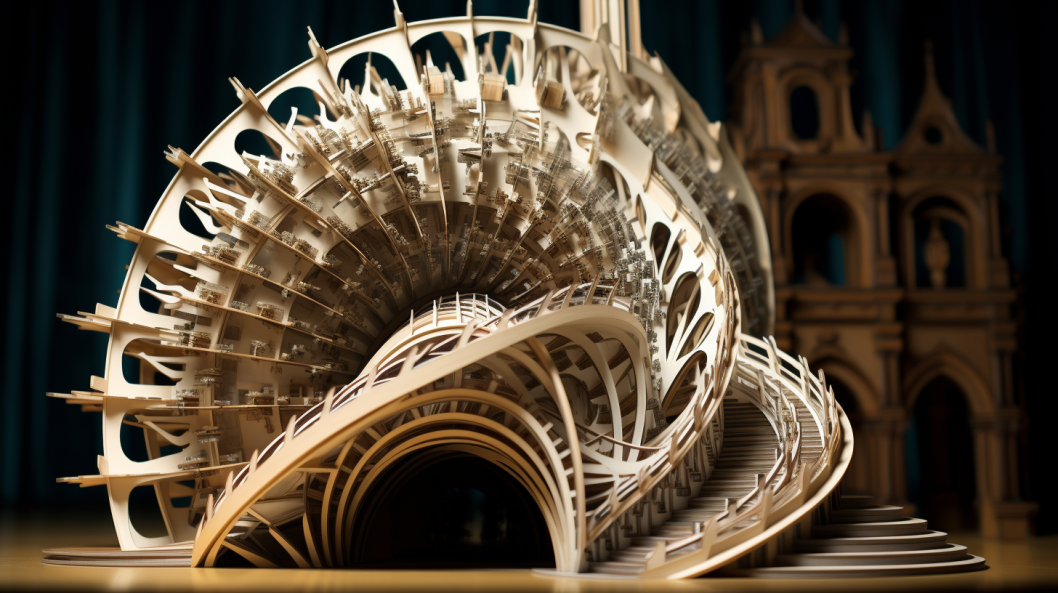
Unveiling the Layers: Origamic Architecture Defined
Origamic architecture, pioneered by artists like Masahiro Chatani, brings forth an exquisite merger of traditional origami and paper cutting techniques, crafting intricate 3D models from a single sheet of paper. This form is intricately bound with mathematical concepts, as each fold and cut delves deep into the realms of geometry and algebra.
In the unfolding of paper, we witness an architectural marvel that expands beyond its two-dimensional origin. Each fold morphs into a structure, with peaks and valleys embodying a living, three-dimensional space. Through precise cuts and folds, artists engineer spatially complex structures, revealing an immersive, miniature world that, while seemingly abstract, is grounded in the precision and logic of mathematics.
The Mathematical Journey Through Folds and Cuts
At the core of origamic architecture lies a mathematical framework that adheres to strict geometric and algebraic rules. Every slice of the knife and every fold embodies a mathematical equation, turning a 2D plane into a 3D structure through precise calculations and strategic planning.
Several mathematical concepts and theories intertwine within this art:
Geometric Transformations:
Each fold symbolizes a geometric transformation, with rotations, translations, and reflections playing pivotal roles in evolving shapes and creating spatial perceptions.
Algebraic Structures:
The relationships between different parts of the structure are not random but adhere to algebraic structures, ensuring that every fold and cut harmonize to sustain the stability and coherence of the final creation.
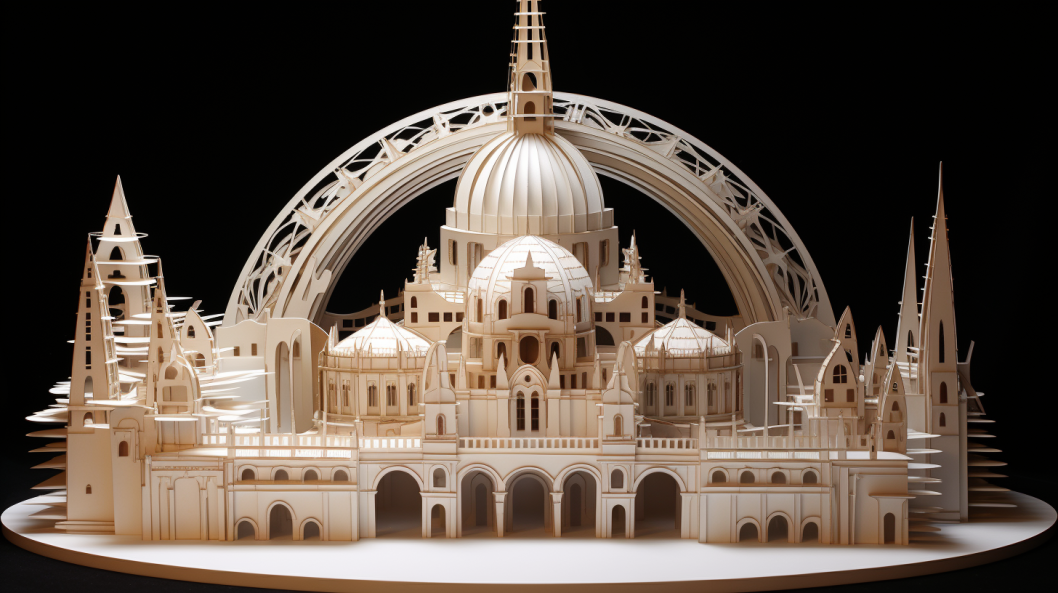
Topology:
As the paper transforms, its topological properties—such as connectivity and boundaries—are preserved, even as it morphs into an intricate architectural form.
Proportion and Symmetry:
The visible beauty and balance of origamic structures are maintained through strict adherence to proportional and symmetrical relationships, which are governed by mathematical ratios and equations.
Intersecting Worlds: The Analogies of Nature and Architecture
Exploring origamic architecture inadvertently leads to a voyage through nature and man-made structures. The mathematical rules guiding paper folding reflect the same principles driving the formation of natural geometries, such as the spirals of shells or the crystalline patterns within rocks. Similarly, in architectural wonders like the Eiffel Tower or the Sydney Opera House, we witness how engineering and aesthetic design coalesce, echoing the principles observable in origamic structures.
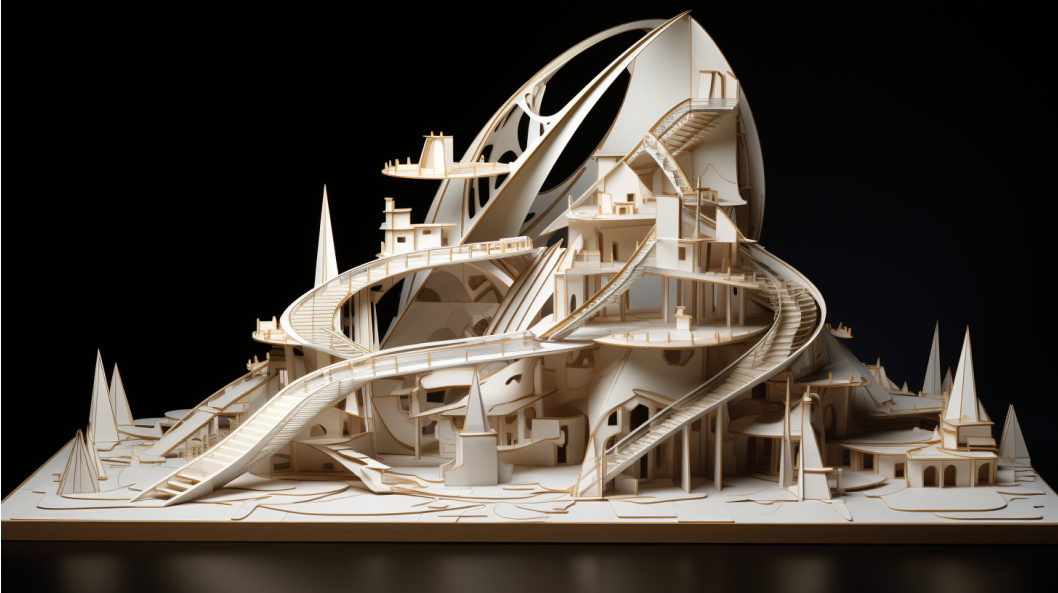
Moreover, the exploration of folding as a principle extends to numerous scientific fields, such as protein folding in biology or the fold theory in mathematics and science, which endeavors to understand the universal principles governing fold patterns and transformations.
Practical Implications: Beyond Aesthetic Pleasure
The exploration of mathematics through origamic architecture extends beyond artistic expression and aesthetic pleasure, weaving its way into practical applications. Scientists and engineers delve into the mechanisms behind folding to innovate and solve complex problems in areas like space exploration, medical devices, and even in architectural design, where the principles of origamic are employed to create collapsible, transportable, and adaptable structures.
The Infinite Unfolding
Through the lens of origamic architecture, mathematics ceases to be an abstract concept, materializing into tangible, visual forms. The folding paper becomes a medium through which the abstractness of mathematical theories unfolds into the palpable realm, providing a bridge between theoretical concepts and physical reality. As we continue to explore the convergence of art, mathematics, and science within these delicate folds, we inch closer to unraveling the endless possibilities hidden within a single sheet of paper. This infinite unfolding, emblematic of both complexity and simplicity, continues to fascinate, inspire, and propel forward our understanding of the world – one fold at a time.
